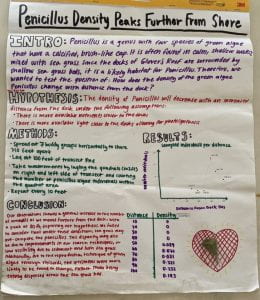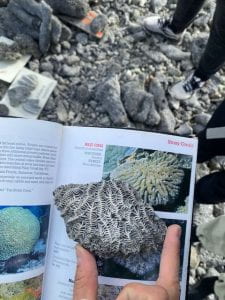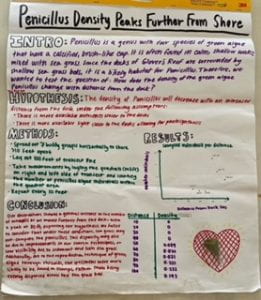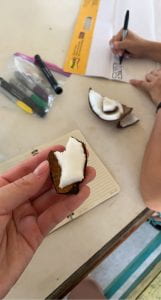Our last day at GRRS! And we spent it doing some pretty worthwhile things. We started off in preparation for our final ever TFB poster. And our final ever project together… a trash pickup around the beach! Since we’ve landed here, we’ve definitely noticed the waste pile around different areas of the atoll, including some sites by our dorm and the coral graveyard we visited earlier.
Our project ended up focusing on different areas of the island, from more protected mangroves to the less protected and more exposed coral graveyard to observe how trash might vary in this spectrum. Unfortunately, no matter where we looked, trash was trash–the island showed definitive coverage via our quadrant methodology. It was a good reminder of how nothing is isolated in the ocean–things can pile up from anywhere and everywhere with consequential impacts.
On a lighter note, we got to do a lionfish dissection from the fish Dr. Evans and Dr. Solomon had hunted earlier. Lionfish are invasive species, which actually makes this a super encouraged practice in the area. We did pretty good with our lionfish even though it was super small, until we had to find these two bulb-like bones in the skull called the otoliths. At which point we gave up and started dissecting the eyes and other parts of our fish that could be salvaged… which also wasn’t much at that point.

This and some yummy coconuts later, we began packing and bid our farewell to the islands. A bunch of us went to the dock one last time, which was super bittersweet. Cannot believe our time is over here, it feels like just yesterday when we were at LCRS… but a final travel day awaits…
Taxon update! Just the sand that the parrotfish have definitely excreted, but no actual parrotfish 🙁

















